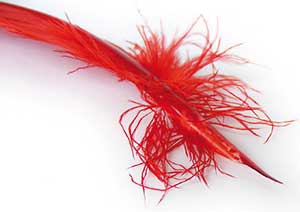Science for the Masses
Career strategies for young European scientists
by Troy Hibbard, Labtimes 03/2014
In the last issue of Lab Times, biotechnologist, Troy Hibbard, gave us plenty of good tips on how to write an article for an academic journal. Now, he tackles a second but not less important issue in the life of a modern scientist or an aspiring science writer: how to communicate one’s results to a non-scientific audience.
Several years ago, when I was a graduate student, my supervisor placed me in an environment where I could work alongside biologists, chemists, physicists and engineers. As exciting as it was to learn from such a wide range of scientists, there was always an issue with communication.
Every field has its own scientific language. Methods to bridge the gaps between the technical linguistics have gone through centuries of ups and downs. As complicated as it may be for scientists to communicate with each other, it is much more difficult for a scientist to discuss the newest technologies and theories with non-scientists. Given that the mere nature of scientific progression requires us to unravel a portion of our complex existence, how can we convey the information in a way that is acceptable to everyone? In this article, I discuss what I have learned in my quest to publish the newest developments effectively for non-scientific audiences.
Taking that first step
Quite often, the most difficult part of any science article is figuring out how to begin. If inspiration is the missing element, it is wise to take some time and catch up on the latest news. Resources such as public media feeds, popular science magazines, or even the colleagues from your laboratory are great places to begin. The key is to grasp what is relevant to both scientists and non-scientists at the moment. This way, you can understand what people want to read, while having a resource that will provide the information.
Luckily, throughout the planet, scientific research is being conducted every second of every day. Essentially, this means that novel concepts arise continuously. It is a science writer’s job to ensure that their audience recognises why certain innovations hold great importance in our current society. In order to do this, the breakthroughs must be explained in a way that is both interesting and understandable.
Follow all science
So, which breakthroughs are the most important and which aspects should be focused on? The answers depend on who your audience is. If the audience is a general one, then pulling from a mixed bag is the best way to go. In other words, keep up with the newest trends in the four cornerstones of research: biology, chemistry, physics and engineering. It is alright to combine these fields since each of them progresses in symmetry with the others.
For example, if physicists were to confirm that molecules actually have the potential to move in dimensions previously unseen, this could heavily impact how chemists synthesise reactions, how biologists assess molecular dysfunction and how engineers design laser-based diagnostics.
After developing a feel for what is presently trending, it is just a matter of narrowing down the topic and figuring out which angle is most comfortable to discuss.
Finding your voice
The path taken toward being a science writer is often one of two. There are those who focus heavily on being educated in writing skills, with a few science courses mixed in, and others who prioritise studying in a field of science, while learning how to perfect their writing techniques along the way.
Each path utilises a distinct writing style and it is not easy to switch between them. Being a scientist, I have been trained to write in a very analytical way necessary for publication of scientific data and reproducible methodology. While this may be suitable for communication among scientists, it tends to lack the more humanistic feel required for discussion with non-scientists. Hence, a key aspect of expressing scientific information to a general audience is to reduce the use of scientific jargon, while ensuring that the essence of the concepts is not lost in translation.
Many of my colleagues have found that the best way to do this is by simply telling a story, using an active voice. In other words, keep the extraneous details to a minimum and talk as though you were in the midst of having coffee with your friends. If a subject is too complex for this, the balance between simplicity and detail is often best achieved with the use of metaphors and imagery. Over time, and with enough external critique, your voice will evolve naturally.
Putting one word in front of the other
It is usually around this point in the development of a science article that a well-known obstacle arises. The obstacle that every science writer faces from time to time is writer’s block. No matter how much you may know about a particular subject, or how much you plan an outline, there are times when the words just won’t flow or come out in a proper manner.
For this article, in particular, I discussed the topic with my colleagues, took notes on the structure of various science magazines and combed through hours of social media. I even managed to develop an outline that I felt was lovely enough to allow the writing juices to flow easily. However, the first day or two were spent merely staring at a blank screen as I tried to figure out, which word was best to begin with.
It is interesting how a single word can initiate the difference between a highly technical discussion and a general one. While this may seem silly to focus on, I have witnessed this particular hurdle set back countless scientists and writers by several months.
The most effective way to bounce back into the writing mode will usually involve some method of closing your mind off from what you are trying to write. Taking a day off to work on another project can save you weeks of struggle. It is well-known that your sub-conscious mind continues to process daily events, while you deal with other tasks. In doing so, your brain is actually working away on your problem without giving you the stress. This is a major part of why you can see flaws or inspiration in your writing through refreshed eyes, where they were hidden the first time around.
Do not edit
That fact is relatable to the idea of not being able to see the forest for the trees. In addition, attempting to use your non-scientific voice when your main style is a technical one may force you to feel an urgency to edit as you write. Try to resist editing as you go or you will spend days on a single sentence. Just follow the outline that you developed and get some sentences on paper about the topic you are focusing on. It will not be of the highest quality but there is no need to worry about quality until after the majority of your ideas are out of your head and on the paper.
To be honest, before I even go back to do edits, I will often ask several of my non-scientist friends to read through the article and tell me if they enjoyed it or if it was a complete train wreck. If they confirm that it was quite poorly written, I will make subtle changes in my writing method to gain further inspiration. For example, writing is strongly linked to a person’s mood and energy at that moment. Therefore, if your mood and energy levels differ from morning to evening, with and without exercise, try to mix up your writing schedule and activity level. Such small alterations in your lifestyle can make huge changes in your output.
Which journal is the right one?
The number of popular science magazines, journals and freelance blog sites are increasing every year. Choosing the one that is right for your topic may require taking a few weeks to read through and assess. However, if you are writing a science article, the odds are that you have been reading such publications for quite some time already and have a pretty good idea about which direction to lean toward with your own articles.
The topic that you choose somewhat dictates who the target audience should be and, with this, it is simply a matter of distinguishing what type of article you are attempting to publish.
Is the article intended to be an informative review, a persuasive topic debate, or for sheer entertainment? Whichever type you may choose to create, take comfort in knowing that publishers of scientific information are enthusiastic about conveying your unique knowledge to the world.
So, if your article is rejected, or comes back to you with a request for hundreds of edits, do not be discouraged. This is simply a rite of passage that will assist with tweaking your research and enhancing your writing skills. Carl Zimmer, an award-winning science writer, often says that when he is asked for advice on how to become a better science writer, he usually just responds with a hasty email so that he can go back to figuring out for himself how to be a science writer (Zimmer, C., ‘A Note to Beginning Science Writers’, 24/06/13, Phenomena.nationalgeographic.com).
Last Changed: 13.05.2013







